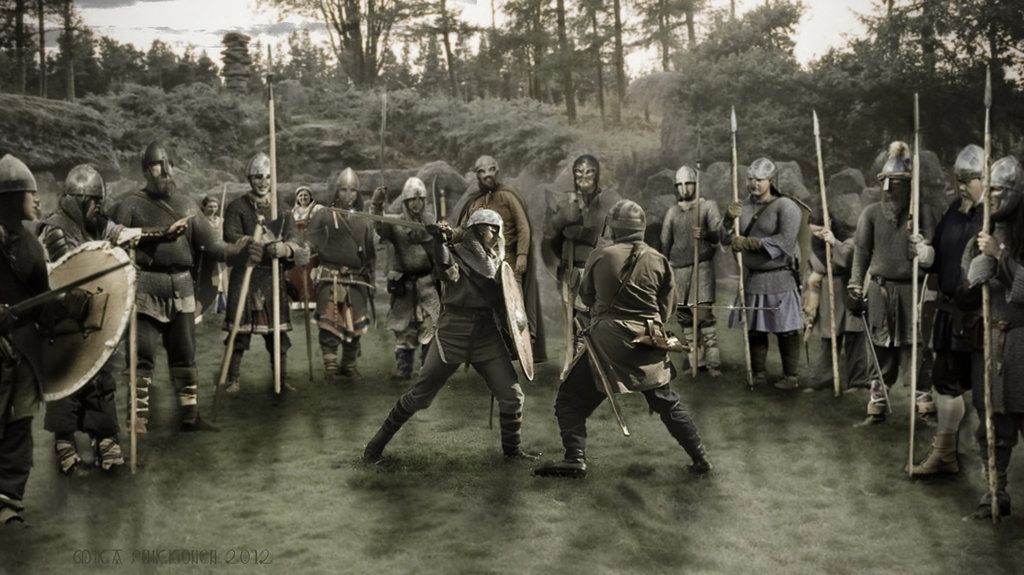Holmgang: How the Vikings Settled their Dispute With Strength
We already know that the Vikings always had a Thing for every matter in their society. It was the event when the Vikings assembled to figure out the solution to their problem. Another way to settle the dispute in the Viking society was to utilize the Holmgang.
What Was Holmgang?
Holmgang was a duel or generally a formal fight between two men with or without weapons. The word "Holmgang" can be interpreted as "go to an island" or "holm going". Anyone challenged didn't show up in the Holmgang would meet with big trouble.

A farmer or a free man could challenge the opponent from the higher social rank to join the Holmgang (Cre: "Vikings" TV Series Scene depicting Ragnar Lothbrok as the farmer duelling with the earl)
The event of Holmgang would take place from three and seven days after one party challenged the other. Anyone regardless of their social rank who was offended could announce their challenge. For example, a free man who was insulted or offended could challenge an earl to compete in a Holmgang. As mentioned, if any party was absent from the Holmgang, they would encounter big trouble. It was considered to be the face of the clan and the matter of honour for a lifetime.
Rules of Holmgang
Anyone that didn't show up at the Holmgang would be regarded as the outlawed in the society. Being declared outlaw was the most terrible thing for the Vikings. Because an outlaw could no longer stay with the tribe and had to live in exile until the last day of his life. He was not allowed to receive any help from his family. In other words, his family could no grant him even little help with food.
The other man who showed up in Holmgang would be announced the winner by default. The prize for being the winner was to claim everything belonging to the loser.

The winner of the Holmgang could claim all of the property of the loser
Every place had different sets of rules for the Holmgang. Before the duel began, the duelists would agree upon the rules: any weapons allowed, who could strike first, and what the winner could receive.
The final result of every Holmgang must be either one death or one incapacitation. Killing the opponent in the Holmgang would no be condemned as the murderer in the Viking society. Thereby, the winner would not be declared as the outlawry or have to pay any fine.
Iceland abandoned Holmgang as the method to solve dispute in 1006. Eight years later, Norway excluded Homlgang from their community.




